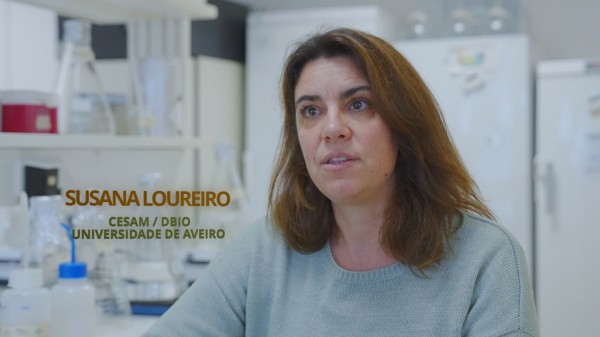On the 5th of December, we will celebrate World Soil Day with a set of activities open to the public.
Complexo Pedagógico, Científico e Tecnológico| from 2 pm | no registration needed
To understand the importance of this date and the relevance of the research on this topic, we had an informal conversation with three of our researchers. The second researcher we met was Susana Loureiro (CESAM |Departamento de Biologia da Universidade de Aveiro).
The excerpts below are the result of this brief informal conversation, which took place in their laboratories. Video available here
Communication_CESAM: ‘How important are soils in our daily lives?
Susana Loureiro: One of the essential functions of the soil is to filter out all the chemical substances that end up in the soil. And they end up in the soil, from pesticides, agricultural fertilisers… sludge from wastewater treatment plants end up in the soil… all these components have chemical substances that can have high or low mobility, that is, travel through the vertical profile of the soils of a quickly, slowly or not at all and remain motionless.
And if they travel quickly through the soil profile, they also quickly reach the groundwater, which is the source of the water we drink and the water that goes to the rivers.
Communication_CESAM:‘And why do we need research on soils?’
Susana Loureiro: Our objective is to understand if the soils have any contaminants that will impact, for example, a river or a lake, or if it stops us from providing a service related to primary production.
In the agricultural component, for example, which is one of the essential services provided by soils, imagine that a pesticide is sprayed and it rains heavily that day, and this causes runoff into a stream that is in an adjacent location. Automatically, everything you apply will flow into the river. Currently, our soils are saturated many times with nitrates and phosphates due to the intense application and also with some chemical compounds that are persistent in the soils.
What we do here is simulate this runoff into the rivers through a mixture that we make of water with soil, which is then agitated, centrifuged, extracted and tested with living organisms – freshwater aquatic organisms. And even in ‘blind’ samples (which we don’t know their chemical composition), these organisms will give us clues about the health of that soil.
In addition to several projects currently underway, we have a partnership with a company called Entogreen, a company dedicated to the production of insects and which has an environmental circularity component. The insects feed on waste, whether plant or waste that cannot be disposed of in an environmentally sustainable way, for example, olive pomace from olive oil production – which is a waste that doesn’t have an effective treatment because it has a very complex and toxic matrix.
These and other residues, such as plant residues that come from supermarkets, are given to the insects, and they process them; that is, they eat them, and their waste, together with the seedlings of the insect larvae, are pelleted and form a very good for soils.
Another component that we are also working on is more oriented towards environmental pollution, which is also linked to the soil ecosystem. There are several European and world projects that study and shape how we are going to be in a few years and the future is not very bright. We are losing a lot of soil biodiversity, which is very important for the normal and natural recycling that soils do of organic matter, and nutrients…
We try to help with monitoring tools; that is, we don’t do remediation processes, we don’t do the waste treatment. What we do is verify the effectiveness of the treatment because chemically analysing a matrix may not be enough because some specific compound may ‘fail’. But we use living beings (earthworms) that are capable of indicating whether or not there is something that is not right in these soil samples.
